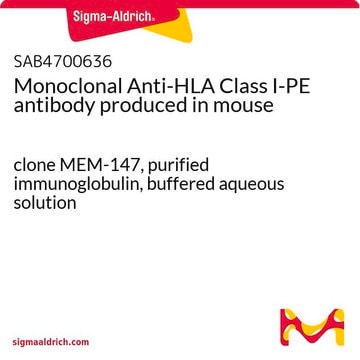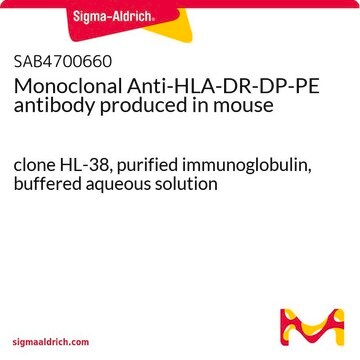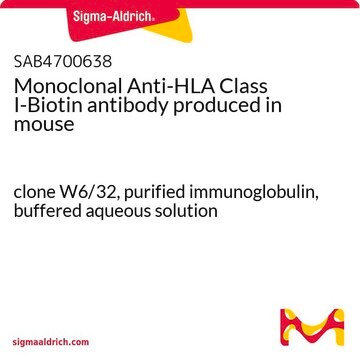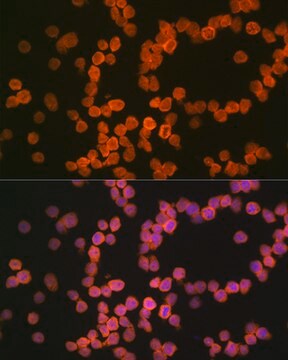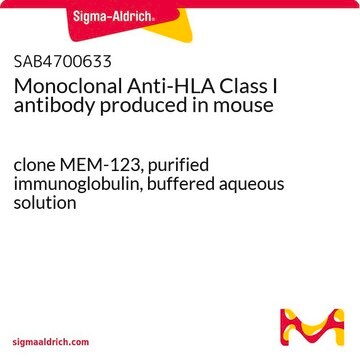F5662
Monoclonal Anti-HLA Class I Antigen−FITC antibody produced in mouse
clone W6/32, purified immunoglobulin, buffered aqueous solution
Synonym(s):
Monoclonal Anti-HLA Class I Antigen
About This Item
Recommended Products
biological source
mouse
conjugate
FITC conjugate
antibody form
purified immunoglobulin
antibody product type
primary antibodies
clone
W6/32, monoclonal
form
buffered aqueous solution
species reactivity
monkey, human
technique(s)
direct immunofluorescence: 1:10 using acetone-fixed human tonsil frozen sections.
flow cytometry: 10 μL using 1 × 106 cells
isotype
IgG2a
UniProt accession no.
shipped in
wet ice
storage temp.
2-8°C
target post-translational modification
unmodified
Gene Information
human ... HLA-A(3105) , HLA-B(3106) , HLA-C(3107)
Looking for similar products? Visit Product Comparison Guide
General description
The previously assigned protein identifier P01892 has been merged into P04439. Full details can be found on the UniProt database.
Specificity
4th Workshop: code no. P1
5th Workshop: code nos. BP166, BP288, BP407, B 005
Immunogen
Application
- flow cytometric analysis
- immunoprecipitation
- complement mediated cytotoxicity
- immunocytochemistry
Physical form
Preparation Note
Disclaimer
Not finding the right product?
Try our Product Selector Tool.
Storage Class Code
10 - Combustible liquids
WGK
nwg
Flash Point(F)
Not applicable
Flash Point(C)
Not applicable
Personal Protective Equipment
Certificates of Analysis (COA)
Search for Certificates of Analysis (COA) by entering the products Lot/Batch Number. Lot and Batch Numbers can be found on a product’s label following the words ‘Lot’ or ‘Batch’.
Already Own This Product?
Find documentation for the products that you have recently purchased in the Document Library.
Articles
Flow cytometry dye selection tips match fluorophores to flow cytometer configurations, enhancing panel performance.
Troubleshooting guide offers solutions for common flow cytometry problems, ensuring improved analysis performance.
Protocols
Explore our flow cytometry guide to uncover flow cytometry basics, traditional flow cytometer components, key flow cytometry protocol steps, and proper controls.
Learn key steps in flow cytometry protocols to make your next flow cytometry experiment run with ease.
Our team of scientists has experience in all areas of research including Life Science, Material Science, Chemical Synthesis, Chromatography, Analytical and many others.
Contact Technical Service

